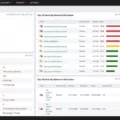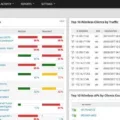Network testing tools are an essential part of any network administrator’s toolkit. In today’s complex networking environment, it’s important to have the right tools to diagnose and repair network issues quickly and effectively. Network testing tools allow administrators to measure performance, identify potential problems before they become major issues, and automate processes to ensure the reliability of their networks.
There are many types of network testing tools available, ranging from simple command-line utilities to sophisticated enterprise-level solutions. Some of the most common testing tools include packet sniffers, throughput testers, latency testers, VoIP testing tools, cable testers, port scanners, and intrusion detection systems.
Packet sniffers are powerful network analysis tool that allows administrators to monitor all traffic on their networks in real-time. With a packet sniffer, administrators can analyze packets sent between two or more computers on the same network and detect any malicious activities or possible security threats.
Throughput testers measure how many bits per second (bps) can be transferred through a given medium such as Ethernet or Wi-Fi. This type of test is useful for capacity planning and performance optimization. Latency testers measure how long it takes for data to travel from one location to another by sending “ping” requests over the network and measuring the round-trip time (RTT).
VoIP testing tools allow administrators to measure voice quality over IP networks by simulating VoIP calls and measuring various parameters such as packet loss rate and jitter levels. Cable testers provide users with a means of verifying cable integrity by sending electrical signals down each wire in a cable assembly and measuring voltage levels at different points along its length.
Port scanners are designed to scan open ports on a given system and provide information about running services such as web servers or database servers that may be vulnerable to attacks from hackers or other malicious entities. Intrusion detection systems monitor suspicious activities on networks in real-time and alert administrators when an attack is detected so that appropriate action can be taken immediately.
Network testing tools are invaluable resources for ensuring the stability and reliability of today’s complex networking environments. By leveraging these powerful solutions, administrators can quickly diagnose problems before they become major issues while also staying ahead of security threats with timely alerts when suspicious activity is detected on their networks.

Types of Network Testing
Network testing is the process of ensuring that a network infrastructure is functioning correctly and efficiently. There are several different types of network testing that can be performed, each serving a specific purpose.
1. Functional Testing: This type of testing involves verifying that all components, including hardware, software, and cables, are functioning as intended. It tests the functionality of the entire system and its components by simulating real-world scenarios to ensure that it is working as expected.
2. Load Testing: This type of testing verifies that a network can handle expected levels of traffic before it is put into production. It helps to identify any performance issues under high loads and helps to ensure the stability and reliability of the network.
3. Stress Testing: This type of test pushes the limits of a network to determine its breaking point, or how much load it can handle before it begins to fail or degrade in performance. It helps determine whether a system is designed for maximum reliability and performance in extreme conditions, such as peak traffic times or natural disasters.
4. Security Testing: This type of test evaluates whether security measures are effective in protecting data from unauthorized access or malicious attacks. It tests authentication measures, encryption protocols, firewalls, intrusion detection systems (IDS), and other security solutions to ensure they are providing adequate protection against threats.
5. Performance Testing: This type of testing evaluates how quickly a network responds to requests or transactions under normal operating conditions with an expected level of traffic on the system at any given time. It also examines throughput capacity (the amount of data transferred over time) and latency (the time taken for data packets to travel between two points).
6. Volume Testing: This type of test typically involves sending large amounts of data through a network to measure its performance in terms of throughput capacity (bandwidth) and response times when handling large volumes of data over prolonged periods.
7 Concurrency Testing: This type of test evaluates how well multiple users can access and use resources on a network simultaneously without causing any conflicts or errors during their interactions with each other or with the system itself.
Performing a Network Test
1) Information Gathering and Clarifying Client Expectations: Before performing a network penetration test, it is important to first gain an understanding of the client’s needs, expectations, and desired outcomes. This can be done by meeting with the client to discuss the scope of the test in detail. During this conversation, questions should be asked about what systems need to be tested, what type of tests are allowed (e.g., active or passive), and if there are any specific areas that should not be tested. It is also important to discuss any compliance requirements (e.g., PCI DSS) that must be met during the testing process.
2) Reconnaissance and Discovery: Once the parameters of the test have been established, it is time to begin reconnaissance and discovery. This step involves gathering information about the target environment such as IP addresses, open ports, and services, operating systems, application versions, user accounts and privileges, etc. This can be done through scanning tools such as Nmap or Nessus or through manual methods such as port knocking or social engineering.
3) Performing the Penetration Test: After gathering information about the target environment it is time to begin performing penetration tests on identified vulnerabilities. This may involve exploiting weaknesses in authentication protocols or gaining access to restricted areas of a system through known vulnerabilities or configuration errors. During this step, it is important to document any findings as they can help in determining potential remediation strategies at a later stage.
4) Reporting on Recommendations and Remediation: The final step in performing a network penetration test is creating a detailed report outlining all findings from the test as well as recommended remediation strategies for any identified vulnerabilities. Depending on the scope of work, this may include anything from simple changes such as patching software or changing default passwords to more complex solutions such as implementing two-factor authentication protocols or upgrading hardware/software components of a system. Once completed, this report should be provided to the client for review and implementation of recommendations if desired.
Testing Network Performance: Best Practices
The best way to test network performance is to use network monitoring software. Network monitoring software allows you to monitor, measure, and analyze the performance of your network in real time. It can give you detailed information about the speed, latency, throughput, errors, packet loss, connection types, and other metrics that help you determine the performance of your network. Additionally, it can provide insights into potential issues with equipment or applications running on the network. You can also set up alerts so you can be notified when certain parameters fall below a threshold. Finally, it provides a comprehensive view of your entire network infrastructure and helps you identify any bottlenecks or possible areas for improvement.
Network Testing Tools
1. Ping: Ping is a basic network testing tool that helps determine the reachability of a network device by sending ICMP echo requests and listening for ICMP echo replies. It can be used to troubleshoot connectivity problems on both local networks and the Internet.
2. Traceroute: Traceroute is a utility that allows users to trace the route taken by data packets from their computer to a specified destination on the Internet. It determines the time taken for each hop along the route, which can help in identifying potential bottlenecks or latency issues in a network.
3. WMI Query Tool: WMI Query Tool is an advanced network testing tool that allows users to query Windows Management Instrumentation (WMI) information from remote computers running the Windows operating system. This tool can be used for troubleshooting issues related to Windows services, hardware components, and other system information.
Testing a Network for Problems
Testing your network for problems is an important step in the troubleshooting process. The first thing you should do is to check all of your hardware to make sure it is connected properly, turned on, and working. You can then use the ipconfig command in Command Prompt to display IP address information and detect any connection problems. Additionally, you can use the ping and tracert commands to test connectivity between two computers or devices. It may also be helpful to perform a DNS check, contact your Internet Service Provider (ISP), check for virus and malware protection, and review database logs. Taking these steps will help you identify any issues with your network so that you can take appropriate action.
Testing Network Connection Issues
Testing network connection issues can be done in a few different ways. First, you can use the Ping Remote tool to determine whether the network can reach a remote target. Next, the traceroute command can be used to trace the network path to a remote target. Finally, the TCP Connection Test tool can be used to verify connectivity to a specific port on a remote target. Additionally, you may want to check for any errors or inconsistencies in your IP address and DNS settings, as well as ensure that your firewall is not blocking any necessary connections. If none of these steps resolve your issue, then you may need to contact your ISP for further assistance.
Checking Network Speed Between Two Computers
To check the network speed between two computers, you can use a program called CommTest. First, install CommTest on both computers. Then, use the Connect button to configure the test’s target. This will initiate a connection between the two computers. Once connected, CommTest will measure the transfer speed, latency, and packet loss between them. It will also display these results in real time on both machines so that you can view them simultaneously. With this information, you will be able to accurately assess your network speed between two computers.
Conclusion
In conclusion, network testing tools are essential components of any network infrastructure. They enable users to assess the performance, stability, and security of their networks, ensuring that they can be relied upon in all circumstances. With the right tools and a thorough testing regime, organizations can ensure that their networks are both reliable and secure, allowing them to get the most out of their investment.








